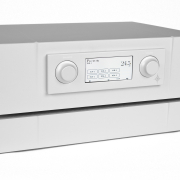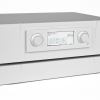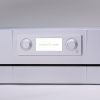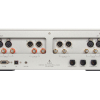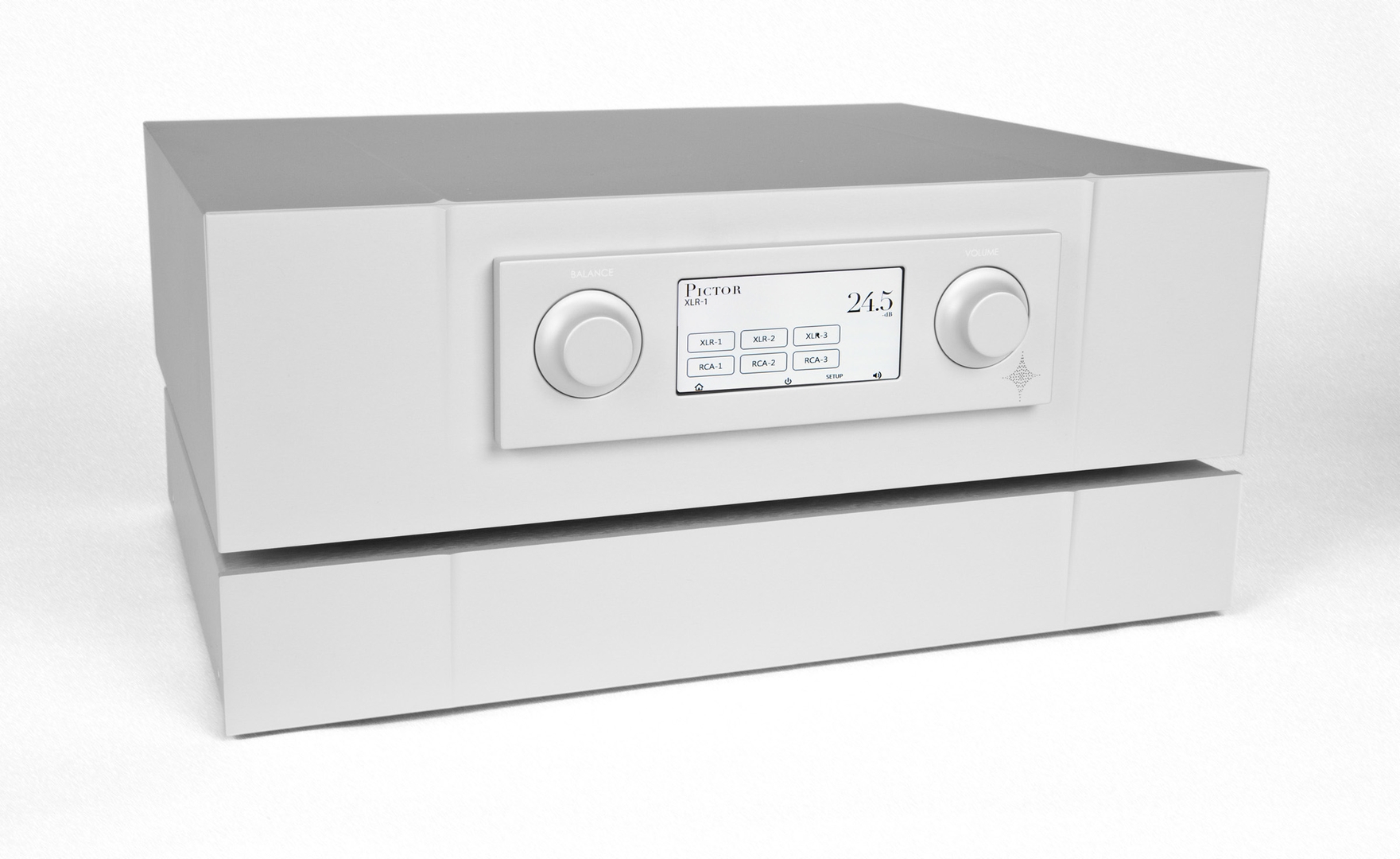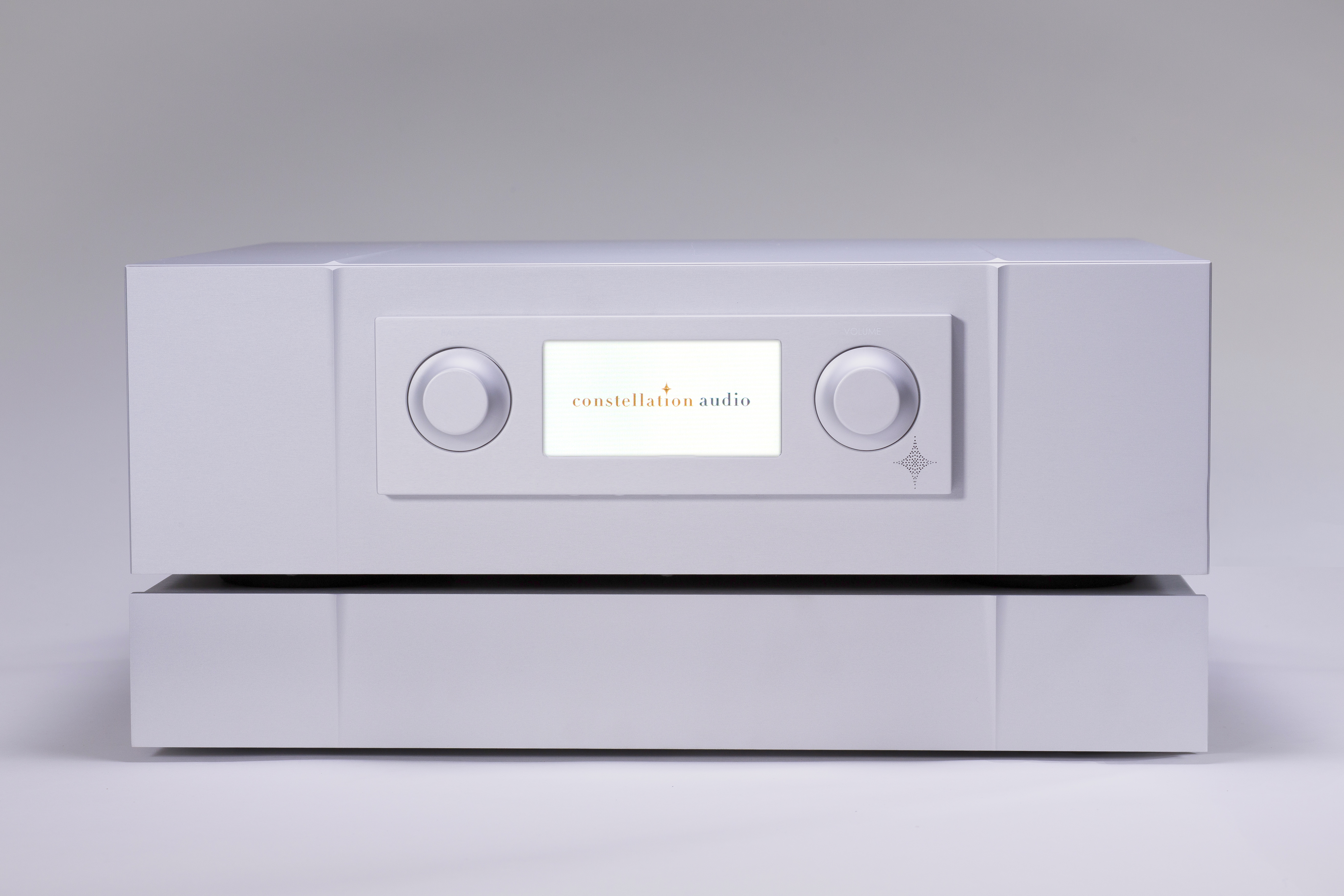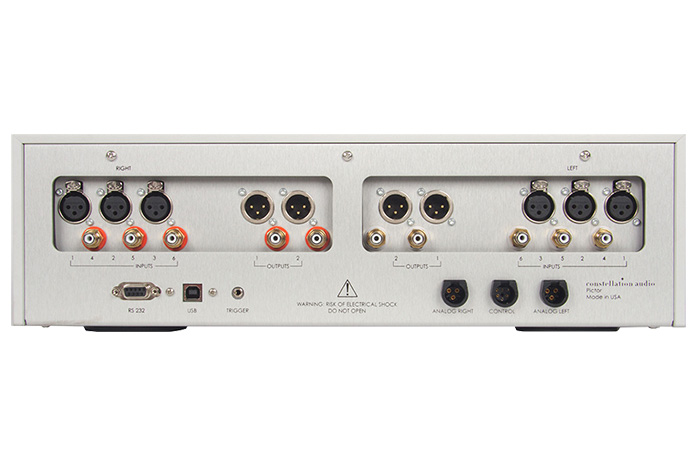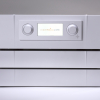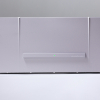- AUDIO ONE-TO-ONE Call Now: 210-805-9927
- Contact
- Register
- My Account
Constellation Audio Pictor Preamplifier
Constellation Audio Pictor Preamplifier
Constellation Audio Pictor Preamplifier
Add Recommended Accessories
Description

MY TAKE: Adopting a unique and brilliant approach, Constellation Audio assembled a team of some of the most respected names in the audio world to pool their talents and design a line of state of the art, industry-leading electronics. Luminaries including Peter Madnick, Bascom King, the late James Bongiorno, John Curl, and Demian Martin collaborated to create a range of products that not only sound amazing, but offer outstanding value. Very impressive gear! - Galen Carol
* Separate dual mono + control power supply
* Dual mono, fully balanced preamp circuitry
* Circuit boards suspended to guard against vibration
* Line Stage Gain Module circuit for ideal positive/negative signal balance
* Dense, machined aluminum chassis panels joined with steel buttresseSimplicity and sound quality -
Pictor is an elemental version of our acclaimed Performance Series Virgo III line stage. It uses the same core circuit topology as Virgo III, and a few minor changes aside, the same separate power supply. The main difference is that Pictor has fewer inputs. For simpler systems, Pictor is the perfect choice: simplicity and sound quality distilled into a single product.
Triple-transformer, separate power supply -
Pictor’s power supply resides in a separate chassis made from machined aluminum slabs, connected to the preamp section by three high-current PCOCC cables tipped with Hypertronics connectors originally developed for aerospace. Keeping the power supply separate shields the audio circuitry from the electromagnetic fields generated by the transformers.
Inside the chassis are three separate power supplies, one each for left channel, right channel, and control circuits. This dual-mono design provides separate R-core transformers for left and right channels. Thus, extreme demands in one channel do not affect the other, so the music is reproduced with all the natural imaging and soundstaging of the original recording. A third EI-type transformer powers Pictor’s control circuits.
Our optional DC power filter augments the already impressive power storage and filtration in the stock power supply. The added peak output and filtration from the DC filter allows Pictor to achieve even better dynamics with even lower power supply noise.
Line Stage Gain Module for perfect signal balance -
The core of Pictor is the Line Stage Gain Module circuit originally developed for our Reference Series Altair line stage. We have found no better method of amplifying and buffering line-level signals. It is a fully balanced topology, with separate mirror-imaged circuits to amplify the positive and negative halves of the audio signal. To assure clear reproduction of even the subtlest details, we use a servo circuit that continuously monitors and maintains the positive/negative signal balance. Use of ultra-low-noise field-effect transistors (FETs) assures that Pictor’s outputs emit pure music and nothing else.
Because Pictor’s outputs achieve essentially perfect balance, they can be connected to Direct inputs of our power amplifiers. This forms the Constellation Link, which further improves fidelity by bypassing the amplifier’s own Line Stage Gain Module.
Physically isolated audio circuits -
Pictor’s audio circuit boards mount on a thick metal plate, which is “floated” using soft, pliable isolators. This isolation prevents ground-borne vibration from reaching the audio circuits. Vibration control in line-level audio components is especially important because the vibrations can create small fluctuations in the values of passive components. These fluctuations can produce an audio signal of their own, which pollutes the music signal and obscures detail. Thanks to our careful layout and construction, these issues are never a concern with Pictor.
Key chassis components are machined from think aluminum slabs. The sheer mass of the metal makes it harder for vibrations to affect Pictor, and the unusually thick panels are capable of blocking any electromagnetic or radio-frequency interference commonly encountered in a home.
Elegant, friendly design -
All of Pictor’s features and adjustments can be controlled through a large, easy-to-read LCD touchscreen on the front panel. Even Pictor’s most advanced features, such as input gain preset and home theater bypass, can be accessed with just a few touches. We chose the touchscreen fonts not only because they look great, but also because they are easy to read from across a room.
Pictor’s most commonly used controls, such as volume, input selection, and mute, can also be accessed through its machined aluminum remote, which echoes the style and elegance of the preamp itself.
We have noticed that many audiophiles are gravitating toward simpler systems, perhaps with just a turntable and a digital media server as sources. For them, Pictor may be the ideal preamp. Its sound quality is exceeded only by that of our Altair II and Virgo III preamps. Its versatility allows it to achieve maximum fidelity from any source. And its simplicity and ease of use make it a pleasure to use and hear every day.
Specifications -
Inputs: 3 XLR stereo, 3 RCA stereo, USB (for control)
Outputs: 2 XLR stereo, 2 RCA stereo, 12-volt trigger
THD+N: <0.001%, 20 Hz - 20 kHz @ 2V out, <0.1%, 20 Hz - 20 kHz @ 10V out
Frequency response: 10 Hz to 100 kHz, +/- 0.5 dB
Signal-to-noise ratio: >-105 dB, A-weighted
Input impedance (balanced): 20K ohm
Input impedance (single-ended): 10K ohm
Output impedance: < 50 ohm
Volume control resolution: 0.5 dB from 0dB to -90 dBFS
Weight: Preamp: 18.8 lbs/8.5 kg
Power supply: 15.4 lbs/7 kg
Dimensions (W x H x D):
Preamp: 17 x 5.25 x 15 in (whd)
43.2 x 13.3 x 38.1 cm (whd)
Power supply: 17 x 2.75 x 14.5 in (whd)
43.2 x 7 x 36.8 cm (whd)
Constellation Audio Pictor Preamplifier
Add Recommended Accessories
Description

MY TAKE: Adopting a unique and brilliant approach, Constellation Audio assembled a team of some of the most respected names in the audio world to pool their talents and design a line of state of the art, industry-leading electronics. Luminaries including Peter Madnick, Bascom King, the late James Bongiorno, John Curl, and Demian Martin collaborated to create a range of products that not only sound amazing, but offer outstanding value. Very impressive gear! - Galen Carol
* Separate dual mono + control power supply
* Dual mono, fully balanced preamp circuitry
* Circuit boards suspended to guard against vibration
* Line Stage Gain Module circuit for ideal positive/negative signal balance
* Dense, machined aluminum chassis panels joined with steel buttresse
Simplicity and sound quality -
Pictor is an elemental version of our acclaimed Performance Series Virgo III line stage. It uses the same core circuit topology as Virgo III, and a few minor changes aside, the same separate power supply. The main difference is that Pictor has fewer inputs. For simpler systems, Pictor is the perfect choice: simplicity and sound quality distilled into a single product.
Triple-transformer, separate power supply -
Pictor’s power supply resides in a separate chassis made from machined aluminum slabs, connected to the preamp section by three high-current PCOCC cables tipped with Hypertronics connectors originally developed for aerospace. Keeping the power supply separate shields the audio circuitry from the electromagnetic fields generated by the transformers.
Inside the chassis are three separate power supplies, one each for left channel, right channel, and control circuits. This dual-mono design provides separate R-core transformers for left and right channels. Thus, extreme demands in one channel do not affect the other, so the music is reproduced with all the natural imaging and soundstaging of the original recording. A third EI-type transformer powers Pictor’s control circuits.
Our optional DC power filter augments the already impressive power storage and filtration in the stock power supply. The added peak output and filtration from the DC filter allows Pictor to achieve even better dynamics with even lower power supply noise.
Line Stage Gain Module for perfect signal balance -
The core of Pictor is the Line Stage Gain Module circuit originally developed for our Reference Series Altair line stage. We have found no better method of amplifying and buffering line-level signals. It is a fully balanced topology, with separate mirror-imaged circuits to amplify the positive and negative halves of the audio signal. To assure clear reproduction of even the subtlest details, we use a servo circuit that continuously monitors and maintains the positive/negative signal balance. Use of ultra-low-noise field-effect transistors (FETs) assures that Pictor’s outputs emit pure music and nothing else.
Because Pictor’s outputs achieve essentially perfect balance, they can be connected to Direct inputs of our power amplifiers. This forms the Constellation Link, which further improves fidelity by bypassing the amplifier’s own Line Stage Gain Module.
Physically isolated audio circuits -
Pictor’s audio circuit boards mount on a thick metal plate, which is “floated” using soft, pliable isolators. This isolation prevents ground-borne vibration from reaching the audio circuits. Vibration control in line-level audio components is especially important because the vibrations can create small fluctuations in the values of passive components. These fluctuations can produce an audio signal of their own, which pollutes the music signal and obscures detail. Thanks to our careful layout and construction, these issues are never a concern with Pictor.
Key chassis components are machined from think aluminum slabs. The sheer mass of the metal makes it harder for vibrations to affect Pictor, and the unusually thick panels are capable of blocking any electromagnetic or radio-frequency interference commonly encountered in a home.
Elegant, friendly design -
All of Pictor’s features and adjustments can be controlled through a large, easy-to-read LCD touchscreen on the front panel. Even Pictor’s most advanced features, such as input gain preset and home theater bypass, can be accessed with just a few touches. We chose the touchscreen fonts not only because they look great, but also because they are easy to read from across a room.
Pictor’s most commonly used controls, such as volume, input selection, and mute, can also be accessed through its machined aluminum remote, which echoes the style and elegance of the preamp itself.
We have noticed that many audiophiles are gravitating toward simpler systems, perhaps with just a turntable and a digital media server as sources. For them, Pictor may be the ideal preamp. Its sound quality is exceeded only by that of our Altair II and Virgo III preamps. Its versatility allows it to achieve maximum fidelity from any source. And its simplicity and ease of use make it a pleasure to use and hear every day.
Specifications -
Inputs: 3 XLR stereo, 3 RCA stereo, USB (for control)
Outputs: 2 XLR stereo, 2 RCA stereo, 12-volt trigger
THD+N: <0.001%, 20 Hz - 20 kHz @ 2V out, <0.1%, 20 Hz - 20 kHz @ 10V out
Frequency response: 10 Hz to 100 kHz, +/- 0.5 dB
Signal-to-noise ratio: >-105 dB, A-weighted
Input impedance (balanced): 20K ohm
Input impedance (single-ended): 10K ohm
Output impedance: < 50 ohm
Volume control resolution: 0.5 dB from 0dB to -90 dBFS
Weight: Preamp: 18.8 lbs/8.5 kg
Power supply: 15.4 lbs/7 kg
Dimensions (W x H x D):
Preamp: 17 x 5.25 x 15 in (whd)
43.2 x 13.3 x 38.1 cm (whd)
Power supply: 17 x 2.75 x 14.5 in (whd)
43.2 x 7 x 36.8 cm (whd)


